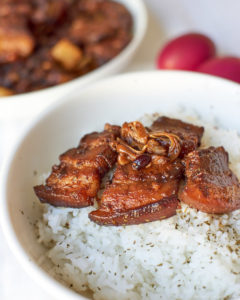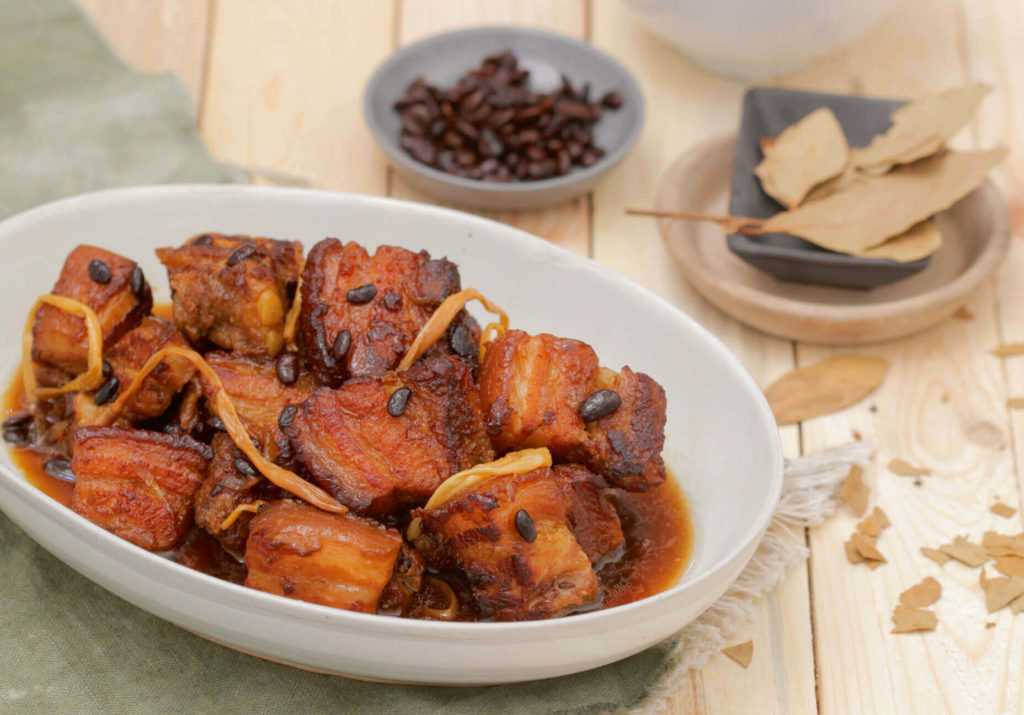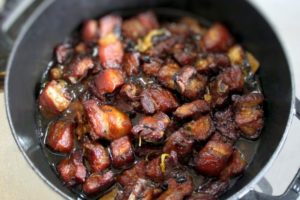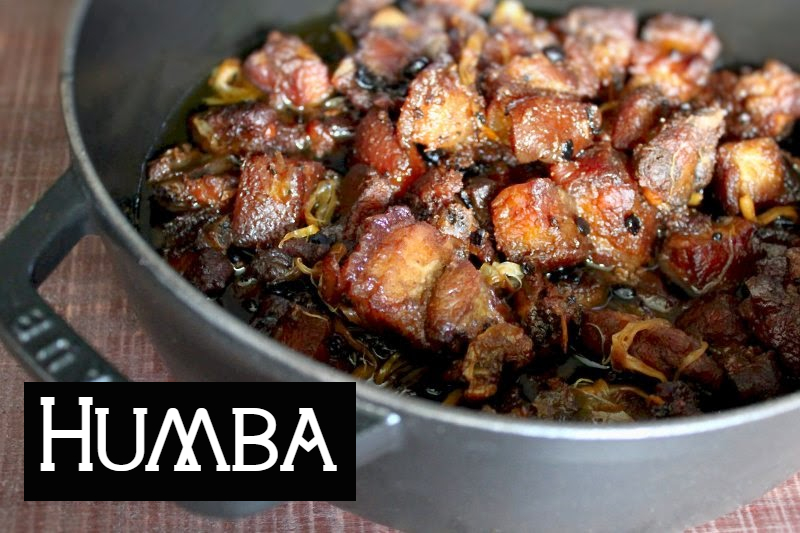Do you like Adobo? Did you know that there is a sweeter and more appetizing version of it in the Visayas called humba?
Welcome to the third part of EV Learners’ 8 Native Foods of Eastern Visayas.
In this article, we will be savoring the delicious and feasty food, humba. This recipe for humba is purely Visayan, and it is popular as a similar delicacy to the famous Adobo. Discover the tangy Filipino taste with this sweet and savoury pork dish and the thing that makes it unique from the Adobo of the Tagalogs.
Humba Origin
Humba is a main dish popularized in the Visayas. Its main ingredient is pork belly coupled with the mixture of brown sugar, soy sauce, vinegar and black beans (tausi). Similar in preparation and aftertaste to adobo, ingredients like boiled eggs, banana blossoms and sliced pineapples may be added to it. Humba is mainly pork meat (ham, hocks, belly), unlike adobo which is a combo of meat and veggies.
This delicacy can be cooked for daily meals, but it is most commonly served during special occasions such as birthdays, fiestas,and gatherings. There are many speculations on how it really began. Some accounts tell that it was introduced by Chinese settlers to us due to its ingredients. Others argue that it is purely indigenous, giving the term ‘Visayan adobo version.’
This viand can be replicated to many more variations by adding different tastes to it, depending on the taste of the chef. People from Luzon and Mindanao are also bringing this meal to their homes. So expect humba to be everywhere in the Philippines.
 Since this is a viand with few ingredients, pork humba can be easily prepared at home. But for those who are excited to eat or just want some nice outdoor meal, there are karinderyas or restaurants that serve this. But we think it’s better if you cook this at home so you can experiment on your own recipe. Plus, if you know how to cook adobo, making humba is just a piece of cake.
Since this is a viand with few ingredients, pork humba can be easily prepared at home. But for those who are excited to eat or just want some nice outdoor meal, there are karinderyas or restaurants that serve this. But we think it’s better if you cook this at home so you can experiment on your own recipe. Plus, if you know how to cook adobo, making humba is just a piece of cake.


Cringey for more delicious, traditional foods from Eastern Visayas? Find out more only here on EVLearners!
Meanwhile, check out the other native foods articles like Binagol, Moron and Sagmani.
Photo Credits:
http://dead-hungry.blogspot.com/

